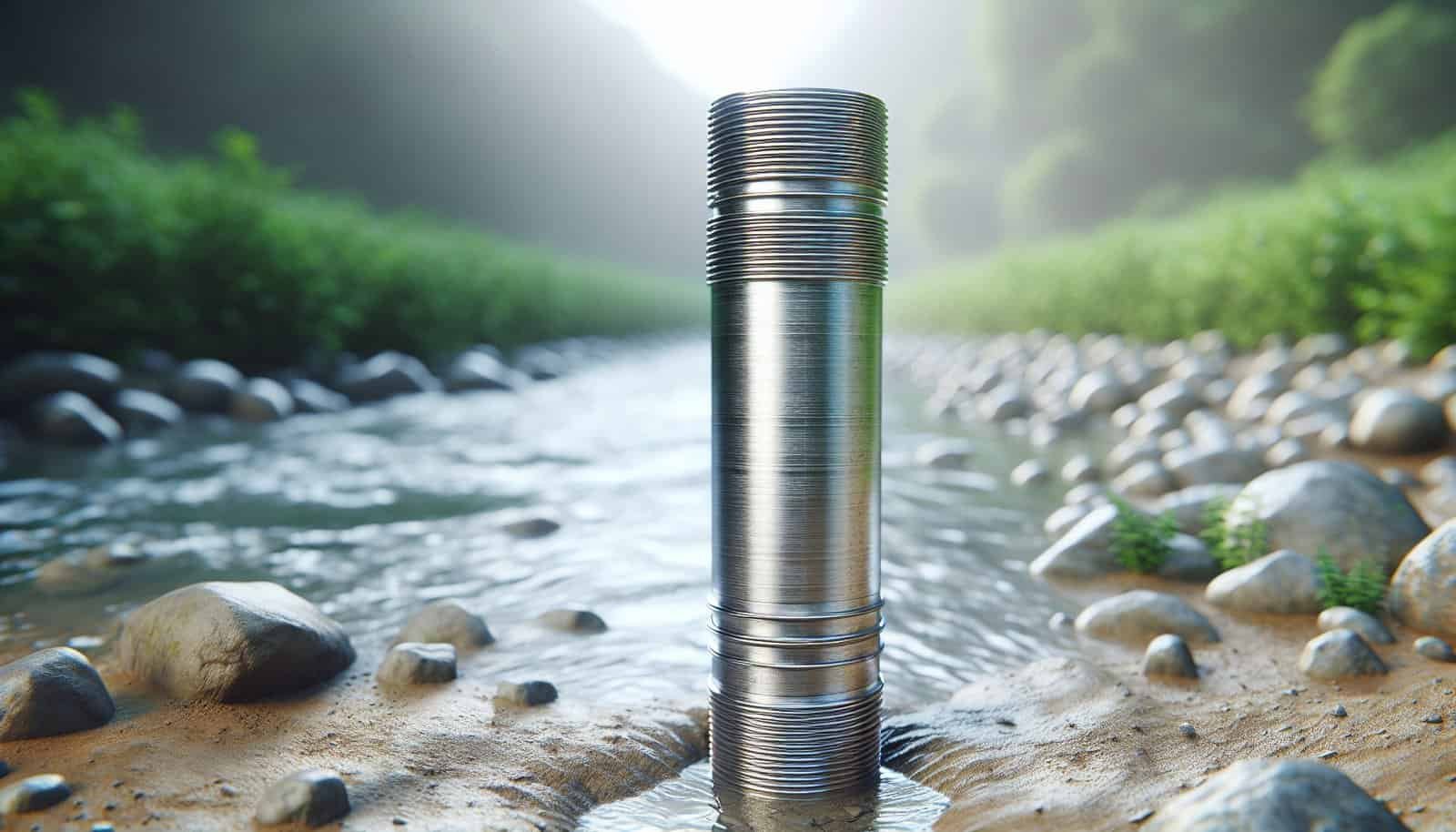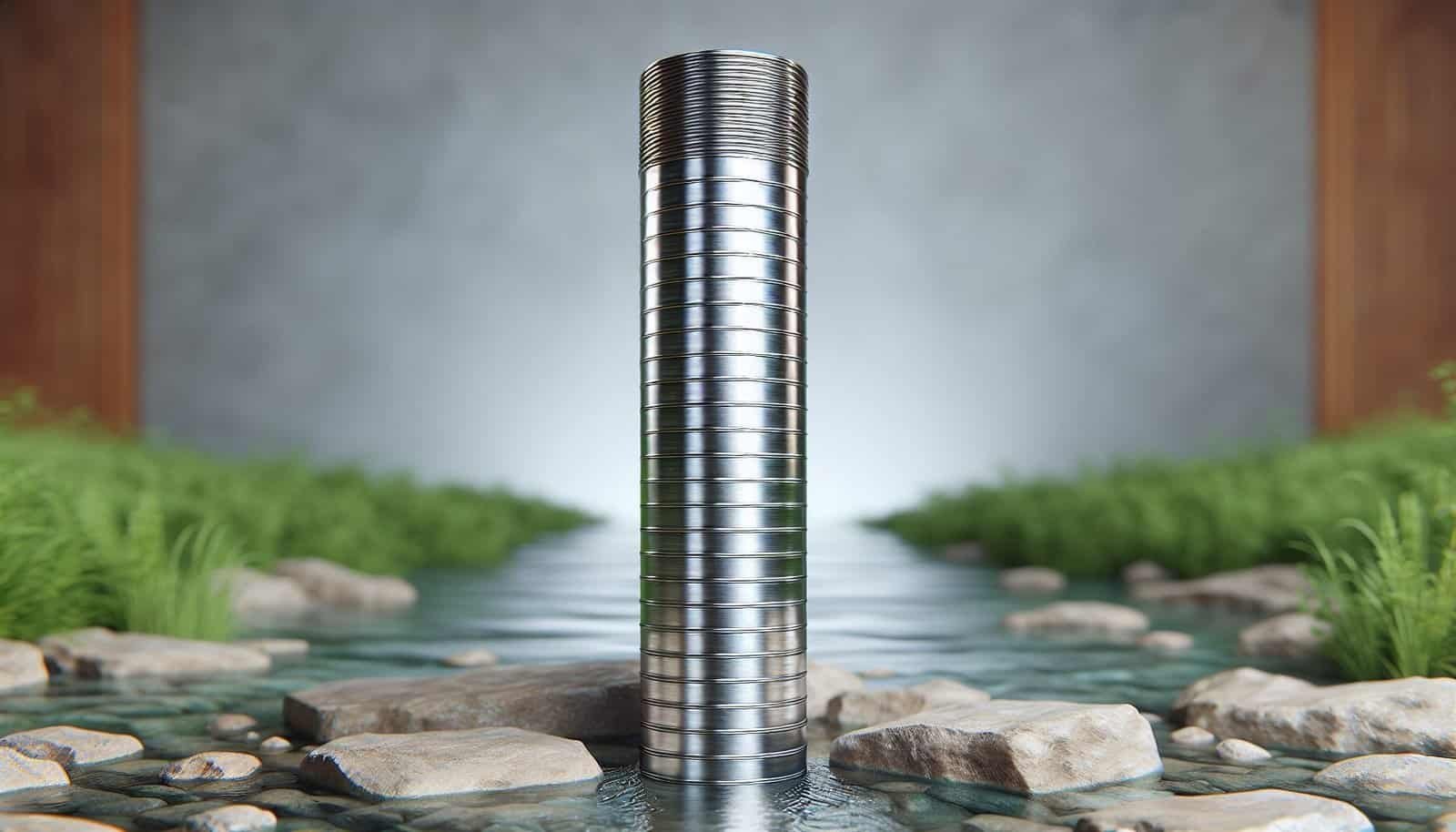? Are you trying to choose the safest material for your well casing to protect your drinking water and your investment?
What Are The Safest Materials For Well Casing?
This article gives you a thorough, friendly guide to the safest materials for well casing and how to decide which one fits your situation. You’ll get practical information about material properties, potential risks, installation factors, and maintenance so you can protect groundwater quality and long-term performance.
Why Well Casing Matters
Well casing forms a protective barrier between the well bore and surrounding soil or rock, and it prevents contaminants from entering the water supply. You’ll want a casing material that maintains structural integrity, resists corrosion and chemical leaching, and supports reliable sealing with grout and well caps.

Core Functions of Well Casing
Casing stabilizes the well bore, isolates water-producing zones, and allows a sanitary seal to be placed at the surface. You’ll use casing to keep out surface water and shallow contaminants and to ensure safe pumping and sampling.
Key Safety Criteria for Casing Materials
Choosing a safe casing material requires evaluating several performance factors under real conditions. You’ll want to assess corrosion resistance, chemical inertness, mechanical strength, longevity, ease of joining and sealing, and compatibility with local groundwater chemistry.
Corrosion Resistance
Casing that corrodes will fail structurally and may release contaminants into the aquifer. You should choose a material that withstands oxygen, chlorides, sulfides, acidity, and other aggressive agents present in your groundwater.
Chemical Leaching and Inertness
Even corrosion-resistant materials can sometimes leach compounds into water under certain conditions. You want a casing material that has minimal leachable constituents and is certified or commonly accepted for potable water wells.
Mechanical Strength and Abrasion Resistance
Your casing must withstand down-hole pressures, well development, and the mechanical stress of pumping and installation. Choose materials with proven tensile strength and abrasion resistance appropriate to your depth and pump type.
Longevity and Maintenance Needs
A safe choice is often one that lasts decades with limited maintenance. Your decision should factor in expected service life, the feasibility of repairs, and availability of replacement parts or fittings.
Compatibility with Grouting and Seals
A safe casing material will bond or seal reliably with grouts, seals, and surface well caps to maintain a sanitary seal. Pay attention to joint types, thread compatibility, and seal materials.

Common Well Casing Materials Overview
Several materials are used for well casings, each with advantages and limitations. You’ll commonly encounter PVC, HDPE, various steels (including stainless), and sometimes concrete or cast iron. The right choice depends on depth, aquifer chemistry, local regulations, and budget.
PVC (Polyvinyl Chloride)
PVC is widely used for shallow to moderate-depth wells because it’s lightweight, resistant to many corrosive agents, and relatively inexpensive. You’ll appreciate its ease of cutting and joining, plus the fact that it won’t rust.
PVC limitations include lower maximum temperature tolerance and potential deformation under high pressures or very deep wells. It can also be damaged by UV light if left exposed before installation.
HDPE (High-Density Polyethylene)
HDPE is flexible, highly chemical-resistant, and tough against impact and abrasion. You’ll find it suitable for contaminated sites and environments where flexibility helps mitigate borehole movement.
HDPE can be heat-welded for seamless joints, reducing leak risk. However, long-term creep under constant stress, and compatibility with some well components, need consideration.
Steel (Carbon/Black Steel)
Carbon steel offers high mechanical strength for deep wells and construction situations where casing must support heavy loads. You’ll use steel where structural rigidity is critical.
The main drawback is corrosion risk: untreated carbon steel can corrode quickly in many groundwater chemistries. Protective coatings, cathodic protection, or sacrificial anodes can help, but they add complexity and cost.
Galvanized Steel
Galvanized steel has a zinc coating that slows corrosion. It can be cost-effective initially, but the zinc eventually wears, and in aggressive water conditions the lifespan may be limited. You’ll need to consider potential zinc leaching into water.
Stainless Steel
Stainless steel delivers excellent corrosion resistance and long life, making it a very safe option for many water wells. You’ll pay more upfront, but stainless often reduces lifecycle costs due to low maintenance and minimal corrosion.
Different stainless grades (304, 316, duplex) offer varied performance; 316 and duplex alloys are better in chloride-rich environments.
Cast Iron and Concrete
Cast iron and concrete casing are less common for modern potable wells but may be used in special circumstances like large-diameter municipal wells or older wells. These materials are heavy and can be susceptible to corrosion or scaling in certain chemistries. You’ll usually prefer modern plastics or stainless steel for small-diameter domestic wells.
Comparative Table: Common Casing Materials
This table summarizes key characteristics to help you compare materials quickly and decide which best suits your well conditions.
| Material | Corrosion Resistance | Typical Depth Range | Strength / Rigidity | Chemical Leaching Risk | Typical Use Cases |
|---|---|---|---|---|---|
| PVC | High (non-metallic) | Shallow to moderate (up to ~300-500 ft typical) | Moderate | Low | Domestic wells, low-corrosion aquifers |
| HDPE | Very high (flexible polymer) | Shallow to moderate (can be used deeper with proper design) | Moderate to High (flexible) | Low | Contaminated sites, flexible casing needs |
| Carbon Steel | Low (without protection) | Very deep | Very High | Moderate (corrosion products) | Deep wells needing rigidity, older installations |
| Galvanized Steel | Moderate (zinc coating) | Moderate to deep | High | Moderate (zinc) | Budget-conscious wells, short-term use |
| Stainless Steel | Very high | Shallow to very deep | Very High | Low | Aggressive chemistries, high-durability needs |
| Concrete/Cast Iron | Variable | Larger diameter, municipal wells | Very High | Variable | Large-diameter municipal or industrial wells |

How Groundwater Chemistry Influences Material Choice
Your groundwater chemistry is a major factor in deciding casing material because water composition drives corrosion and leaching. You should test your water for pH, dissolved oxygen, chloride, sulfate, carbon dioxide, iron, manganese, and hydrogen sulfide before selecting casing.
Acidic or Low pH Water
Acidic water accelerates metal corrosion. You’ll generally avoid plain carbon steel in such conditions and consider stainless steel or corrosion-resistant polymers.
High Chloride or Saline Water
Chloride ions promote pitting corrosion in some stainless steels and are especially aggressive toward carbon steel. You’ll want stainless grades resistant to chloride (e.g., 316 or duplex) or non-metallic casings like HDPE or PVC.
Sulfide or Sulfate-Rich Water
Sulfides can contribute to sulfide stress cracking or microbiologically influenced corrosion in metals. You’ll lean toward non-metallic casings or stainless alloys that resist sulfide attack.
Microbial Activity and Iron/Manganese
Microbially influenced corrosion can occur in iron-containing waters. You should consider materials that resist biofilm formation or pair metal casings with antimicrobial measures and effective sealing.
Regulations and Standards You Should Know
Selecting well casing requires compliance with local and national regulations and best-practice standards. You’ll want to verify standards such as ASTM specifications for casings, local groundwater protection laws, and plumbing codes for potable supply.
ASTM and API Standards
ASTM has specifications for PVC and steel casing materials, while the American Petroleum Institute (API) provides guidance for steel casing in deeper, high-pressure applications. You’ll match your materials to the applicable ASTM/API grades.
Local Health and Environmental Codes
Local health departments and water agencies often set minimum standards for casing depth, material, and sanitary sealing. You should check permit requirements early in the planning process.

Installation Best Practices to Maximize Safety
Material choice matters, but proper installation and sealing are equally critical for safety and longevity. You’ll need to focus on proper jointing methods, sanitary seals, grout placement, and well head protection.
Joints and Connections
Leaks typically occur at joints. You should use proven joining methods — solvent welding for PVC, heat fusion for HDPE, threaded or welded steel joints — and ensure threads and gaskets meet standards. Proper torqueing and sealant selection are essential.
Grouting and Annular Seals
A continuous grout column between casing and borehole blocks surface water and shallow contaminants from migrating down the annulus. You should place grout from bottom-up using tremie pipes to avoid voids and ensure a full seal.
Well Caps and Surface Protection
A locked, sanitary well cap prevents small animals, debris, and runoff from entering the well. You’ll want a cap with a screened vent and a tamper-proof design installed flush with a concrete platform or protective casing riser.
Cathodic Protection for Metal Casings
If you use steel casing in corrosive environments, consider cathodic protection systems or sacrificial anodes where appropriate. You’ll need monitoring to ensure the protection system remains effective.
Monitoring, Testing, and Maintenance
Regular monitoring and testing protect water quality and identify early signs of casing failure. You should include periodic inspections, water quality testing, and mechanical checks in your maintenance plan.
Visual and Video Inspections
Video logging (borehole camera) lets you inspect casing condition, detect corrosion, and evaluate grout integrity. You should schedule inspections on a routine basis or after events like earthquakes or heavy surface contamination.
Water Quality Testing
Test for conductivity, pH, iron, manganese, and coliform bacteria at least annually, and more frequently if you notice taste, odor, or turbidity changes. You’ll use trending data to detect slow degradation or contamination.
Pressure and Flow Testing
You should verify performance with pumping and specific capacity tests. Declines in flow or structural failures may indicate scaling, collapse, or annular leaks.

Choosing Materials Based on Well Type and Depth
Different well types and depths place unique demands on casing materials. You’ll match material selection to the expected stresses and the aquifer characteristics.
Domestic Shallow Wells (Private, <100–300 ft)< />3>
For most private wells that are shallow to moderate depth, PVC is often the safe, cost-effective choice. You’ll get excellent corrosion resistance and low leaching risk with proper installation and grout sealing.
Intermediate Depth Wells (300–1000 ft)
At greater depths, mechanical strength becomes more important. You’ll consider heavy-duty PVC schedule series, HDPE with appropriate wall thickness, or steel depending on required stiffness and expected pressures.
Deep and High Pressure Wells (>1000 ft)
Deep wells and those with higher downhole pressures often require steel or high-strength alloys. You’ll likely choose steel casing with protective measures (coatings or cathodic protection), or high-grade stainless for highly corrosive waters.
Contaminated or Remediation Wells
When you’re dealing with contamination or chemical exposure, HDPE’s chemical resistance and heat-weldable joints often make it the preferred choice. You’ll want a material that won’t absorb contaminants or break down under remediation chemicals.
Environmental and Health Considerations
Your casing choice affects not only well longevity but also environmental and public health risks. You should consider leaching potential, the impact of manufacturing and disposal, and how failure modes could release contaminants.
Leaching of Plastics
PVC and HDPE are generally safe for potable applications when certified, but additives or plasticizers in some formulations can leach under certain conditions. You’ll want casings that comply with potable water standards and avoid unknown or non-certified plastics.
Metal Corrosion Products
Corroding metal can contribute iron and other metals to water. You’ll monitor and mitigate this via material selection and corrosion control.
Lifecycle and Disposal
Consider the environmental footprint of manufacturing, transport, and disposal. You’ll weigh long-term durability and recyclability as part of the safe choice.
Cost vs. Safety: Balancing Budget and Risk
A lower initial cost may not equate to the safest long-term choice. You should consider the total lifecycle costs including installation, maintenance, potential treatment for contamination, and expected service life when making decisions.
Upfront Cost Comparisons
Plastics like PVC are typically cheapest initially, while stainless steel is expensive. However, you’ll save money over time if higher-cost materials reduce maintenance and risk.
Long-Term Risk Costs
A failed casing can lead to contamination that’s expensive or impossible to fully remediate. You should prioritize materials that reduce the probability of contamination, especially for wells supplying drinking water.
Decision-Making Checklist for Your Well Casing
Use this checklist to guide your selection process so you don’t overlook critical factors.
- Test groundwater chemistry (pH, chloride, sulfide, oxygen).
- Confirm well depth and design pressures.
- Evaluate shock, abrasion, and mechanical load requirements.
- Review local regulations and required materials or standards.
- Consider lifecycle costs, not just upfront price.
- Verify joining, sealing, and grouting compatibility.
- Plan for inspections, testing, and corrosion control measures.
- Select materials certified for potable water where required.
Frequently Asked Questions (FAQs)
You’ll likely have some practical questions when deciding on casing material. Here are clear answers to common concerns.
Is PVC safe for drinking water wells?
Yes, when you use potable-grade PVC that meets applicable standards and install it properly with appropriate seals and grout. You’ll want to avoid plastic formulations that aren’t certified for drinking water applications.
Can I retrofit a metal well with plastic casing?
In some cases you can install a liner (e.g., HDPE or PVC) inside an existing metal casing to isolate corrosion or contaminants. You’ll need to evaluate diameter, depth, and the condition of the original casing before deciding.
How long do different casing materials last?
PVC and HDPE can last several decades under favorable conditions, and stainless steel can last even longer. Carbon steel life varies widely depending on groundwater chemistry and protective measures. You’ll plan for inspection intervals rather than rely on a fixed lifespan assumption.
When is stainless steel necessary?
Choose stainless steel for chloride-rich or highly corrosive environments, or when you need long service life and minimal maintenance. You’ll weigh its higher upfront cost against lifecycle savings.
Practical Example Scenarios
Here are a few example scenarios to illustrate material choices for real situations.
Private Rural Home, 150 ft, Neutral pH, Low Chlorides
You’d likely choose schedule PVC casing with solvent-welded joints, proper grout annulus, and a locked sanitary cap. This gives you good corrosion resistance, low cost, and long service life.
Deep Farm Well, 800 ft, Moderate Chlorides
You might prefer heavy-duty steel casing with a corrosion-resistant coating or a stainless liner depending on budget. You’ll also plan for cathodic protection and regular corrosion monitoring.
Monitoring or Remediation Well, Contaminated Site
You’ll favor HDPE for its chemical resistance and heat-fused joints that minimize leakage. This material reduces risk of interaction between casing and contaminants during treatment.
Summary and Final Recommendations
Your safest casing material depends on groundwater chemistry, depth, structural needs, maintenance capacity, and budget. For most domestic, shallow wells in benign water chemistry, potable-grade PVC is a safe, cost-effective option. In aggressive chemical environments, stainless steel or HDPE will often offer superior protection. For deep, high-stress wells you’ll weigh steel with appropriate corrosion controls.
Make decisions based on water testing, local codes, and lifecycle thinking rather than price alone. Proper installation, grouting, and maintenance are as important as the material itself for keeping your well safe and your water clean.
Next Steps You Should Take
You should start with a comprehensive water chemistry test and consult local well construction regulations. Talk to licensed well drillers or hydrogeologists to match material selection with your site’s specifics, and make sure your chosen materials and installation methods meet or exceed local and national standards.
If you’d like, you can share your well depth, local water test results, and any specific concerns, and you’ll get tailored guidance on the safest casing options for your situation.
